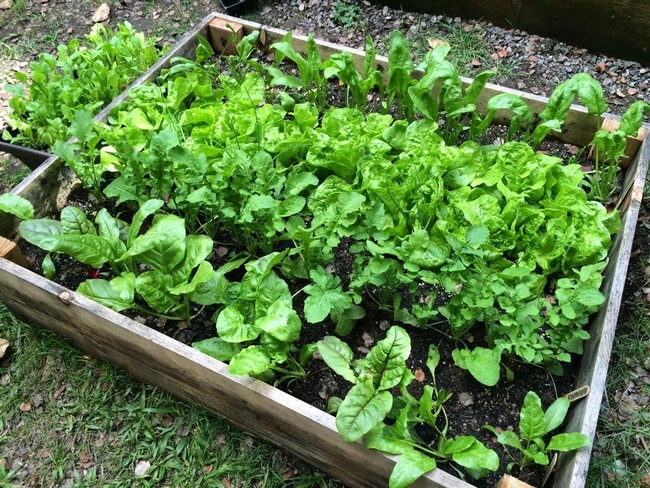A lot of us have turned to our gardens for exercise and solace during this pandemic. My flowers have never looked better! But I confess this is the first year I've had a vegetable garden in several years.
Summer vegetables are well under way, but it's not too late to start—summer is the perfect time to plant for fall and winter, and winter vegetables don't need a lot of room. A raised bed or even large planter boxes or containers will work. Winter vegetables are easier to care for too, without the heat of summer to contend with. Even a novice can grow wonderful salad greens (lettuce, spinach, chard) and easy root crops (carrots, radishes, beets). Cole crops (cabbage, broccoli), although a little more prone to disease and pests, might be fun to try.
Vegetables need sunlight, lots of it. Vegetables that provide fruit (think tomatoes, eggplant) need 6-8 hours/day, but winter crops such as leafy or root crops can tolerate some shade. Avoid heavy shade such as the north side of a building or under trees.
Vegetables need good soil. The easiest way for the novice to have good soil for a small vegetable garden is to use a raised bed, reinforced by a wooden frame and filled with a good quality raised bed potting soil. This will provide good drainage and air circulation. Raised beds can be put together at home or purchased commercially. Winter vegetables can also be grown in large containers, if the containers have good drainage and contain quality potting soil. The soil depth depends on the crop, but most of the winter vegetables mentioned above can be grown in beds 9-16” deep. See Growing Vegetables in Containers for specifics on planting depths, spacing, and more.
Decide what to plant. Important considerations are the space available and whether the food is something the family enjoys. Leafy and root vegetables can easily be planted from seed. Lettuce and carrots can be planted starting mid-July. With many leafy and root vegetables, successive plantings can extend the harvest. Follow the planting instructions on the seed package. See Understanding Information on a Seed Packet for more information on seeds. Be sure to thin the seedlings as directed, especially with carrots. Cabbage & broccoli are planted from seed a little earlier, in June/July, but transplants are also available in August. See Vegetable Planting Guide for a vegetable planting guide chart for our area.
Vegetables need adequate water. Raised beds and containers dry out more quickly, so check the soil daily in mid-summer and on windy days. Newly planted seeds should be evenly moist and not allowed to dry out. More mature plants can be watered when the top inch feels dry. Water early in the morning to allow the leaves to dry out. Avoid washing out soil in containers by using a slow even spray.
Vegetables need added fertilizer. Nitrogen is low in California soils, and some areas are also low in Phosphorus. Especially in containers, nutrients wash out more quickly. All fertilizers come with the percentage of Nitrogen, Phosphorus and Potassium on the package. Using a balanced liquid fertilizer every 2-4 weeks or supplementing the soil with slow release fertilizer are both options. For container plants, dilute liquid fertilizer to half strength. Vegetable Garden Basics is useful for more information on fertilizer and other aspects of vegetable gardening. If specific problems arise, the UC Davis Integrated Pest Management website offers a wealth of help.
The pleasure of growing your own food is delectable—there are many more varieties to choose from, and the freshness is unrivaled. Enjoy the harvest!
